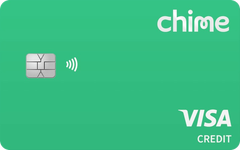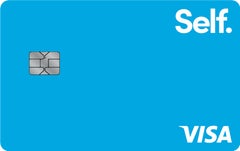While the Indigo card can help you build credit, it can come at a cost. You could face a high annual fee and punishing interest if you carry a balance. And for a card dedicated to credit-building, the Indigo card lacks some standard features. Similar cards with lower fees and better credit-building benefits might be more appealing.
Rewards: A focus on building credit instead
It shouldn’t be the priority of credit builders to focus on padding a rewards balance, but if it’s what you’re looking for the Indigo is not your card. Cash back and points can encourage people to engage with increased spending because of the presence of a rewards rate.
Instead of managing rewards rates, bonus categories and welcome offers, you can keep things simple with this card and focus on paying off your balance each month. This will help you practice positive spending habits while you passively work toward better credit, and qualify for better cards.
Credit limit: Hard to keep credit utilization low
You gain access to the Indigo Mastercard credit limit without a security deposit, making it an unsecured card—which helps the card stand out as an accessible option for anyone with bad credit.
But the relatively low $300 credit limit doesn’t give you much flexibility to make purchases, which can harm your credit utilization ratio. Your annual fee and purchases will all cut into your credit line. For instance, carrying a balance of just $90 would give you a nearly 30 percent utilization ratio. A balance any higher than that could result in a credit utilization ratio that might negatively impact your credit score.
Fees: Additional costs add up
When you apply for this card, the issuer will assign you one of three possible annual fees:
- $0
- $59
- $75 the first year, $99 thereafter
Your credit score ultimately determines your annual fee. Additionally, the issuer, Celtic Bank, doesn’t specify in the cardholder terms whether your annual fee will change as your credit score changes.
If you are approved for the card but have an annual fee and your credit score improves while you’re an Indigo Mastercard cardholder, consider applying for another card. Keeping your sights on better, more affordable cards will give you a milestone to work toward which could incentivize credit-building.
One highlight of the card’s rates and fees is its foreign transaction fee. The Indigo card comes with a low 1 percent fee for every international transaction, outpacing the typical 3 percent fee found on most other cards. Although the card is not exactly a no-foreign-transaction-fee card, 1 percent is a solid rate for a non-travel credit card.
Ongoing APR: Expensive for carrying a balance
The Indigo Mastercard has a regular APR of 24.90 percent for purchases and missing a payment can bump your ongoing interest rate up to the 29.90 percent penalty APR. The card’s regular APR isn’t astronomical, but it also isn’t ideal should you ever need to pay less than the full amount on your balance. If you pay late, you’ll also face a late payment fee of up to $40. These rates and fees could hinder your credit-building progress if you happen to carry a balance on your card or miss a payment.
The card does offer a 0 percent cash advance fee for your first year (then $5 or 5 percent of the total transaction amount, whichever is greater, but must not exceed $100). But cash advances are rarely a good idea and are especially dangerous on a card with a low credit limit and high fees.
Credit-building features: Limited benefits
This card lacks features that can help you improve your credit score. You won't find perks like an automatic review of your account for a credit line increase, free monthly credit reports or customizable payment plans.
Instead, the Indigo card only offers two basic benefits for credit-builders: a soft credit pull to prequalify and reporting credit activity to all three credit bureaus. These two features can be advantageous. For instance, by prequalifying you can get a sense of your approval odds for this card and it won’t impact your credit score.
Many credit-building cards offer this essential feature and more, such as credit line increases as you pay your balance responsibly. These features aren’t exclusive to unsecured cards either — there are plenty of unsecured cards, like the Mission Lane Visa® Credit Card, that carry these benefits too.






